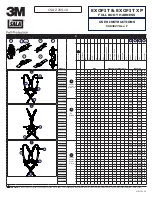
Operating the device
46
6.9 Grinding methods
6.9.1 Grinding with ring sieves with reinforced rim
The selection of the mesh size of the ring sieves depends on the desired final fineness levels
and the sample material. For brittle materials, final fineness levels of approx. 80 % smaller than
half the mesh size of the used sieves are achieved.
6.9.2 Grinding with distance sieves
When grinding materials with a low melting point or grinding processes where any rise in
temperature as a result of grinding must be kept as low as possible, the use of spacer sieves is
recommended.
Due to the larger distance between the test sieve and the rotor, the temperature rise is lower.
The grinding result may be slightly coarser than when using ring sieves.
6.9.3 Cold grinding
WARNING
W6.0000
Risk of injury caused by liquid nitrogen
Use of liquid nitrogen during cryogenic grinding
−
Liquid nitrogen has a boiling point of
– 196 °C and causes burn-like
injuries and frostbite if there is skin and eye contact.
•
Take note of the liquid nitrogen safety data sheets.
•
Always wear goggles and protective gloves when using liquid
nitrogen.
CAUTION
C9.0000
Risk of injury due to frozen CO
2
(dry ice)
Use of dry ice during cryogenic grinding
−
Dry ice has a temperature of
–78 °C and causes injuries similar to burns
or frostbite if it comes into contact with skin and eyes.
•
Follow the safety data sheets.
•
Always wear protective goggles and gloves when using dry ice.
Materials that are difficult or impossible to grind at normal temperatures must be cold ground.
By embrittlement with liquid nitrogen (-196 °C), for example, the fracture behaviour of e.g.
thermoplastics, rubber products, fatty foods, pharmaceuticals, etc. can be improved.
For cold grinding, Retsch GmbH offers a cryokit for cooling with liquid nitrogen or dry ice.
















































